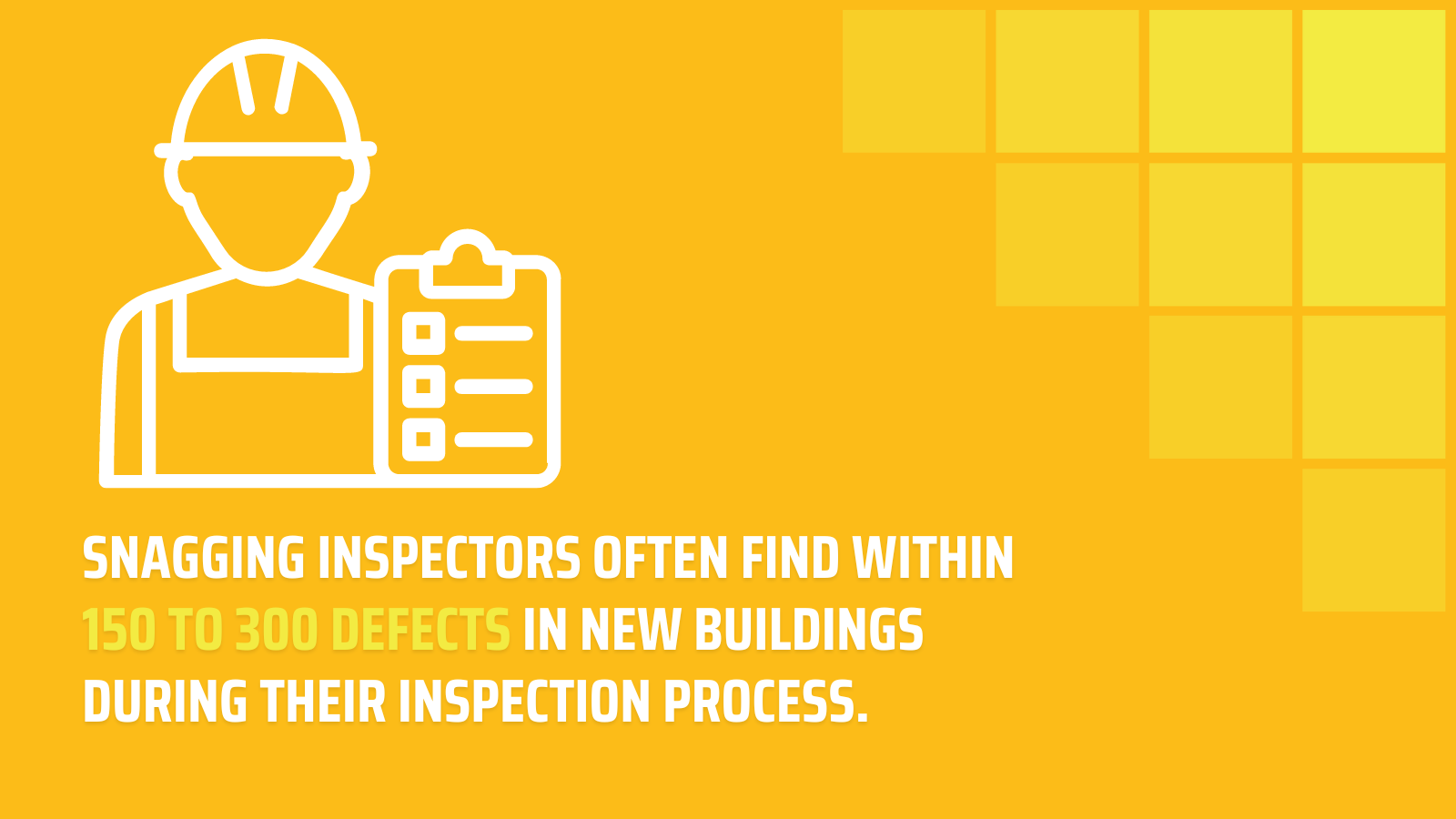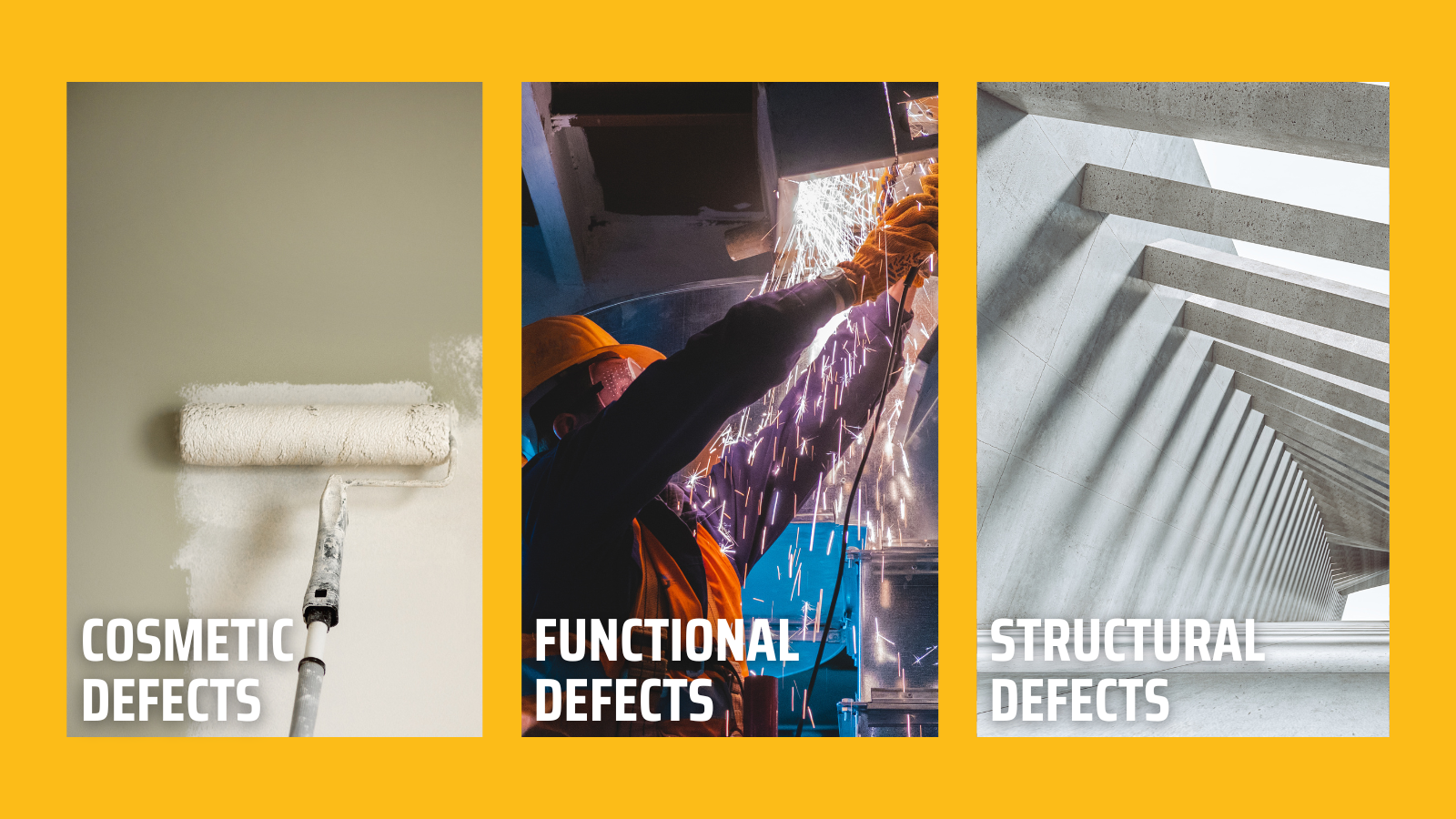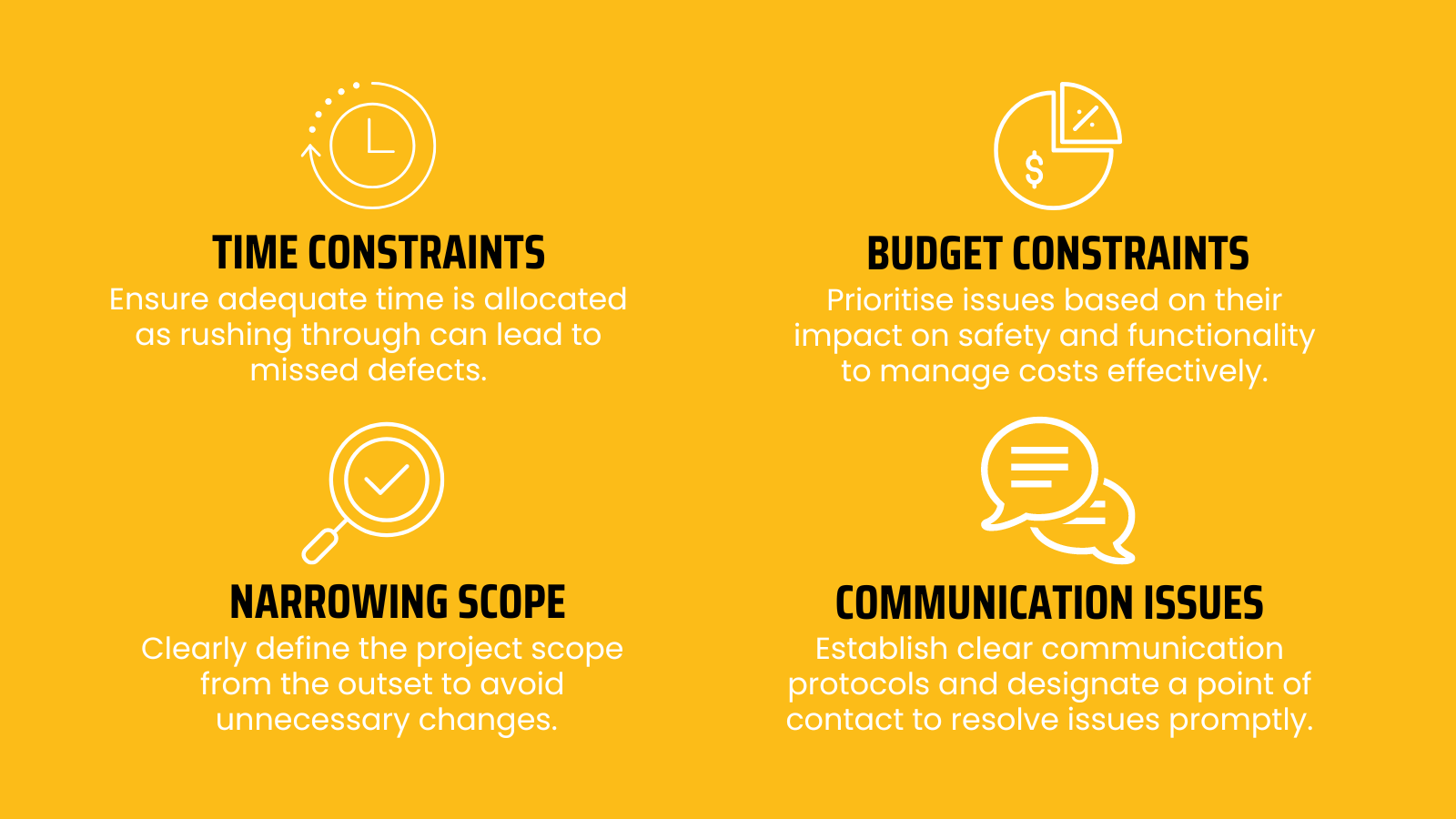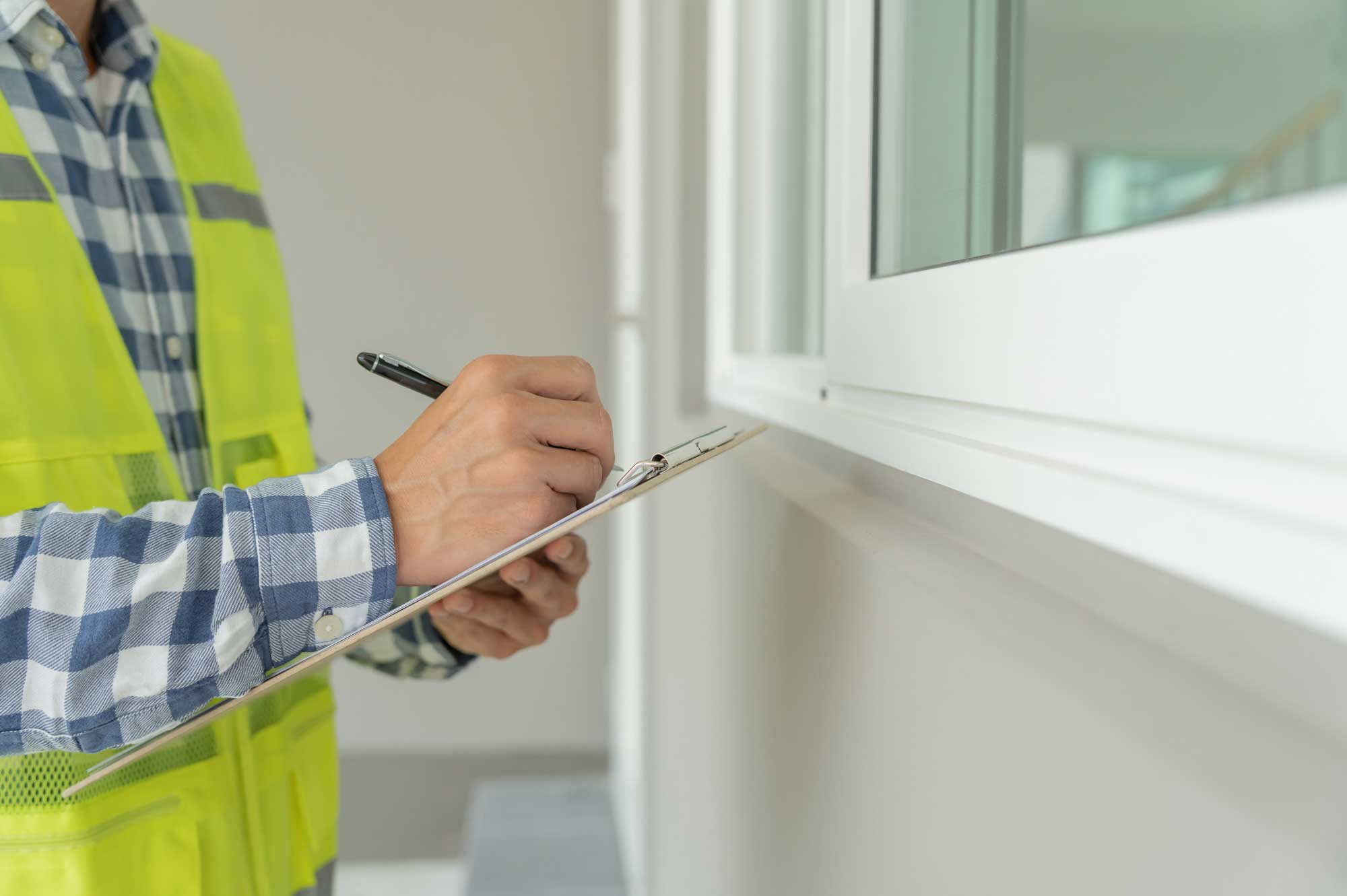Maintaining high standards of quality is essential in every construction project. Whether it's a large commercial development or a residential build, ensuring that the final product meets the required specifications is critical to the success of the project. Two key phases in ensuring these standards are met are snagging and closeout. These processes, when done correctly, help prevent costly reworks, improve client satisfaction, and ultimately lead to a smooth project handover.
In this blog, we will explore the importance of snagging and closeout in construction, delve into the best practices for maintaining quality control during these stages, and discuss how these processes contribute to the overall success of the project.
What is Snagging in Construction?
Snagging refers to the process of identifying and rectifying any issues, defects, or incomplete works in a construction project before the final handover. This phase typically occurs toward the end of the project and involves a comprehensive inspection of the site to ensure that the work has been completed to the agreed-upon standards. The aim of snagging is to identify issues that may not meet the client's expectations or the project's contractual requirements.
Snagging items can range from minor cosmetic issues, like chipped paint or scratched surfaces, to more significant problems such as structural defects or functionality issues in mechanical or electrical systems. Due to rising real estate prices, the demand for snagging services has increased substantially over the past decade.
Understanding Snagging Lists in Construction
A snagging list is an essential tool in the construction industry, used to identify and document any defects, issues, or incomplete work in a project before its completion. Typically created towards the end of a construction project, this list helps ensure that all aspects of the work meet the required standards and specifications. By addressing the items on a snagging list, contractors can rectify any faults, ensuring the quality and integrity of the final build. This process is crucial for maintaining high standards in construction, ultimately leading to a smoother handover to the client and reducing the risk of disputes or additional costs.
A recent article stated that snagging inspectors often find within 150 to 300 defects in new buildings during their thorough inspections that would need to be addressed before completion.

Why is Snagging Inspection Important in Construction?
Snagging plays a critical role in maintaining quality control, ensuring that the final product is delivered with no outstanding defects. Here’s why snagging is crucial:
- Ensures Quality: A thorough snagging process guarantees that construction projects meet high standards, both in terms of aesthetics and functionality.
- Prevents Delays and Costly Reworks: Identifying defects early allows the construction team to rectify issues before they become bigger problems, thus preventing delays and reworks.
- Maintains Safety Standards: Addressing functional and structural defects ensures that the building meets safety regulations and is fit for occupancy or use.
What are the Most Common Snags in Construction?
During the snagging process, a variety of issues may be identified. These generally fall into three main categories:
- Cosmetic Defects: These include issues like chipped paint, scratched surfaces, or uneven plastering. While these may not affect the functionality of the building, they can impact the overall aesthetic and perception of quality.
- Functional Defects: These are issues related to the functionality of systems such as plumbing, electrical wiring, doors, windows, or HVAC systems. Functional defects can pose a safety risk or hinder the usability of the building.
- Structural Defects: These are more serious issues related to the building's structural integrity, such as cracks in walls, uneven foundations, or sagging roofs. Addressing these defects is essential to ensuring the building's safety and longevity.

What is the Role of a Snagging Inspector?
A professional snagging inspector plays a significant role in the snagging process. Their job is to perform a detailed, impartial inspection of the construction site, identifying any defects that need to be addressed before the final handover. These defects can range from minor cosmetic imperfections to more critical structural concerns. Qualified inspectors require the expertise to spot issues that may be overlooked by the construction team, ensuring that the project is completed to the highest standards.
When selecting a snagging inspection consultant, it’s important to consider their qualifications and experience. A good inspector will be highly detail-oriented, an effective communicator, and independent, ensuring their assessment is unbiased and focused solely on quality. Their role doesn’t end at identifying defects—they must also work closely with the construction team to ensure that issues are resolved promptly and effectively, preventing delays in the project closeout.
Understanding the Construction Closeout Process
The closeout phase of a construction project is the final step in the process. During this phase, all necessary documentation, inspections, and corrective actions are completed to ensure the project is ready for handover. The goal of the closeout process is to ensure that all contractual obligations have been met, all defects have been rectified, and the project meets both regulatory and client standards.
One key component of the closeout phase is the preparation of a closeout report, which documents the project’s completion status, details of any remaining snagging issues, and the steps taken to resolve them. This report serves as a comprehensive record of the project and ensures transparency between the construction team and the client.
Snagging and Closeout: Guide to Construction Quality Control
Snagging and closeout are integral components of maintaining high standards of Quality Assurance (QA) and Quality Control (QC) in construction projects. While they are distinct phases, both are vital in ensuring the success of the project.
Quality Assurance in Construction
Quality Assurance refers to the processes and activities carried out during the construction phase to ensure that the work meets the required standards. This includes regular inspections, quality checks, and compliance with project specifications. QA is proactive and focuses on preventing defects from occurring in the first place.
Quality Control in Construction
Quality Control focuses on inspecting the final output to ensure that it complies with the agreed-upon requirements. During snagging and closeout, QC plays a crucial role in identifying any remaining defects and ensuring they are corrected before the project is completed. QC is reactive, dealing with defects after they have been identified.
By implementing robust QA and QC systems, construction professionals can ensure that their projects meet the highest standards and are delivered on time, with no major defects or delays.
What are the Best Practices for Snagging and Closeout in Construction?
To ensure the success of snagging and closeout, it’s essential to follow best practices:
- Start Inspections Early: Conduct snagging inspections as early as possible during the closeout process. This allows time for issues to be addressed without causing delays.
- Comprehensive Checklists: Use a tailored snagging checklist to cover every aspect of the project, from structural elements to finishes and mechanical systems. A well-documented checklist ensures nothing is overlooked.
- Prioritise Critical Issues: Address significant defects first, especially those that affect safety or functionality, before focusing on cosmetic issues.
- Effective Communication: Ensure clear and consistent communication between the snagging inspector, the construction team, and all relevant stakeholders. This helps avoid misunderstandings and delays.
- Thorough Documentation: Keep detailed records of all snagging issues, their corrective actions, and the timeline for resolving them. This ensures transparency and accountability throughout the project.
- Leverage Technology: Utilise project management software and digital tools to track snagging and closeout tasks. Mobile apps, cloud-based platforms, and Building Information Modelling (BIM) software can improve efficiency, ensuring that all snagging items are tracked and addressed in real time.
Overcoming Common Snagging Challenges
Snagging isn’t without its challenges. However, by anticipating and addressing these common obstacles, construction teams can streamline the process:
- Time Constraints: Ensure adequate time is allocated for the snagging process, as rushing through this stage can lead to missed defects.
- Budget Constraints: Prioritise issues based on their impact on safety and functionality to manage costs effectively.
- Scope Creep: Clearly define the project scope from the outset to avoid unnecessary changes and delays during snagging and closeout.
- Communication Issues: Establish clear communication protocols and designate a point of contact to resolve issues promptly.

Conclusion
Snagging and closeout are critical phases in construction quality control. By following the best practices above, implementing robust QA and QC systems, and leveraging technology, construction professionals can ensure their projects are delivered to the highest standards, with minimal defects and delays. These processes not only safeguard the quality of the work but also improve client satisfaction and project success.
About us
Stonehaven is a trusted project management company and construction consultant based in Dubai, offering comprehensive construction management services across the UAE with offices located in Dubai, UK and Sri Lanka. As one of the leading project management companies in Dubai, we manage projects from inception to completion, ensuring quality, efficiency, and cost-effectiveness at every stage.
We deliver value through expert project management consultancy services, tailored to meet the unique needs of each client. Our core services include Cost Management, Project Management, Construction Supervision, Engineering Support, Design Support, and Marketing & Communications. Whether you’re looking for construction consultants or project managers in the UAE and wider GCC region, Stonehaven is your trusted partner for achieving excellence in your next project.
At Stonehaven, we specialise in delivering exceptional snagging services and closeout actions as part of our comprehensive construction quality control solutions. Our expert team ensures that all defects are identified, rectified, and documented, resulting in a smooth project handover. Whether you require comprehensive snagging inspections or detailed closeout plans, Stonehaven is here to support your project from start to finish.
Contact us today to learn more about how our snagging and close out services can improve the success of your construction project.








